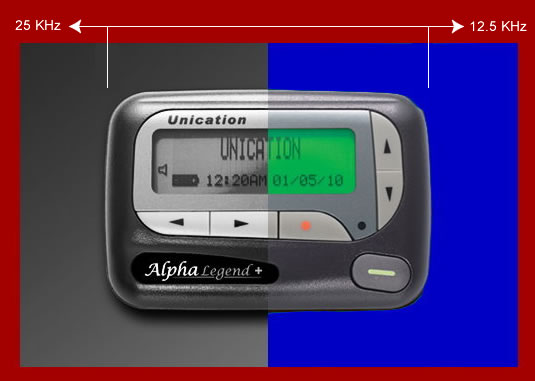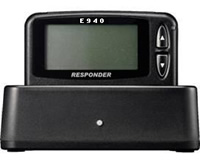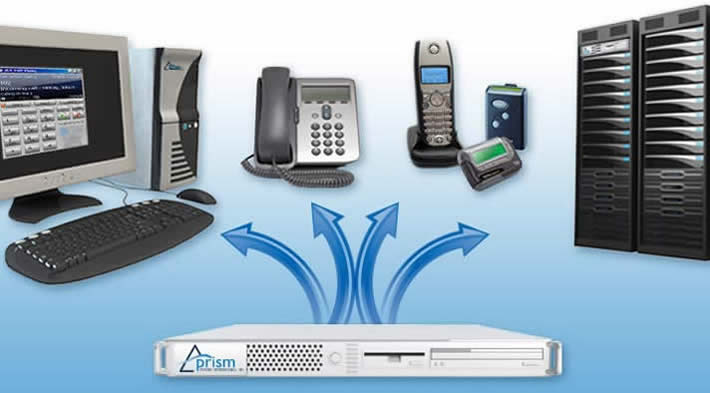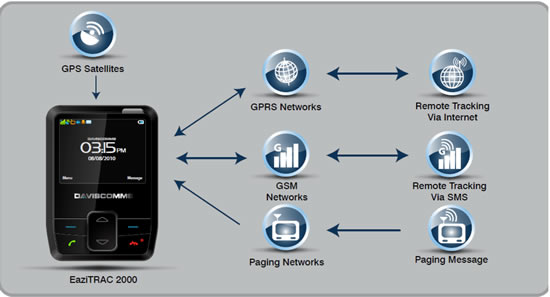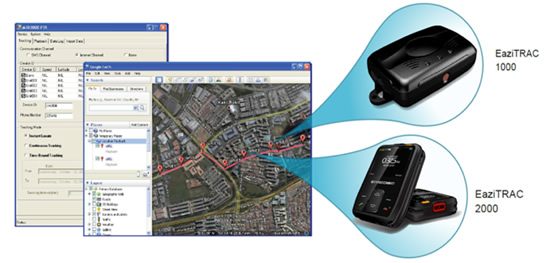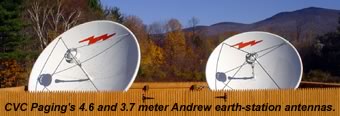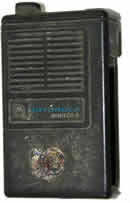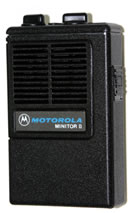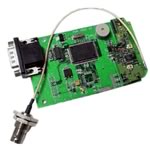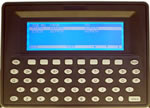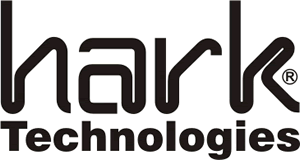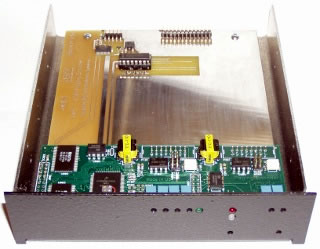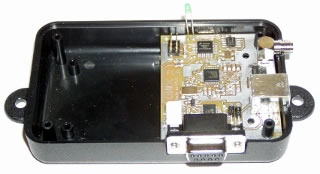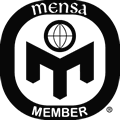BloostonLaw Telecom Update Published by the Law Offices of Blooston, Mordkofsky, Dickens, Duffy & Prendergast, LLP [Portions reproduced here with the firm's permission.] www.bloostonlaw.com |
| Vol. 14, No. 1 | January 5, 2011 |
 HAC Reports Due Jan. 18 The next Hearing Aid Compatible (HAC) reporting deadline for all cellular, PCS, AWS and other digital commercial mobile radio service (CMRS) providers (now expanded to also include carriers that provide service using AWS-1 spectrum, and resellers of cellular, broadband PCS and/or AWS services) is January 18, 2011. The information provided in reports must be current through the end of the calendar month preceding the filing date (i.e., through December 31), and include historical data for the period since the entity filed its last report. The January 2011 HAC reports must include historical (month-to-month) data relating to compliant and non-compliant handset models for the 2010 reporting period, i.e., January–December 2010 for every air interface offered. We have prepared a HAC reporting template to assist our clients in keeping track of their HAC handset offerings, and other regulatory compliance efforts. ALL SERVICE PROVIDERS SUBJECT TO THE COMMISSION’S HAC RULES — INCLUDING COMPANIES THAT HAVE HERETOFORE QUALIFIED FOR THE DE MINIMIS EXCEPTION — MUST PARTICIPATE IN RECORDKEEPING AND ANNUAL HAC REPORTING. The FCC’s HAC rules increased the required number of compliant handsets starting last year, and will continue to require the addition of compliant handsets through next year. It is important that your report show that you offered at least the minimum number (or minimum percentage) of compliant HAC devices during each month of the year. In addition, it is important that the Company’s website agree with the HAC report, since the FCC requires that CMRS provider websites provide detailed information about HAC compliant phones offered by the carrier. The FCC has been very active in fining licensees for HAC violations, even for short periods of non-compliance. BloostonLaw contacts: Cary Mitchell, John Prendergast and Bob Jackson. |
 The FCC has announced its tentative agenda for its Jan. 25 open meeting: An Order and Further Notice of Proposed Rulemaking to ensure that the public safety broadband network is interoperable nationwide. Also scheduled is a staff presentation on efforts to improve the agency’s decision-making.

INSIDE THIS ISSUE - FCC rules on reclaiming USF high cost support.
- FCC seeks comment on 2010 review of HAC rules.
- Comment cycle set on “dynamic access” proceeding.
- FCC seeks comment on comprehensive 2010 biennial review of telecom regulations.
- FCC seeks comment on expanding scope of Travelers Information Stations.
|
The FCC has adopted an Order, amending its rules to reclaim high-cost universal service fund (USF) support surrendered by a competitive eligible telecommunications carrier (ETC) when it relinquishes ETC status in a particular state. In the May 2008 Interim Cap Order, the Commission adopted a cap on high-cost universal service support for competitive eligible telecommunications carriers. Such support had been growing rapidly over the preceding years, increasing the universal service contribution burden on consumers. To rein in this growth, the Commission capped total annual competitive ETC support for each state at the level of support that competitive ETCs in the state were eligible to receive during March 2008, on an annualized basis. Under the interim cap, the Universal Service Administrative Company (USAC) continues to calculate support for competitive ETCs using the Commission’s existing identical support rule, which enables a competitive ETC to receive the same per-line support amount received by the incumbent carrier in its service area. If, however, the total support calculated for competitive ETCs in a state exceeds the interim cap amount for that state, USAC proportionally reduces the support for each competitive ETC serving the state. In the event that additional competitive ETCs are designated in a state, the Interim Cap Order provides that their support also counts toward the interim cap amount for that state, and the cap amount will not be increased to reflect the new competitive ETCs’ high-cost support demands. The cap amount also did not decrease when the number of competitive ETCs serving the state decreased. In a September 2010 Notice of Proposed Rulemaking (NPRM) the Commission sought comment on a proposal to modify its rules to reclaim legacy support surrendered by a competitive ETC when it relinquishes ETC status in a particular state, and permanently to amend its rules to facilitate efficient use of reclaimed excess high-cost support. Specifically, the Commission sought comment on amending the interim cap rule so that a state’s interim cap amount would be reduced by the amount of support that a competitive ETC relinquishing its ETC status was eligible to receive in its final month of eligibility, annualized. As a result: The FCC adopts the proposal to amend the interim cap rule so that a state’s interim cap amount will be adjusted if a competitive ETC serving the state relinquishes its ETC status. As discussed in the September 2010 NPRM, the FCC said, the goal of the Interim Cap Order is to rein in high-cost universal service disbursements for potentially duplicative voice services. The FCC found that the proposal is consistent with that goal. It would reduce the overall cap on competitive ETC support in a state when a competitive ETC relinquishes its designation in the state, rather than redistributing the excess funding to other competitive ETCs in the state. Providing the excess support to other competitive ETCs in a state would not necessarily result in future deployment of expanded voice service, much less broadband service, the FCC said. It could simply subsidize duplicative voice service. On the other hand, reducing the pool of support in a state could enable excess funds from the legacy high-cost program to be used more effectively to advance universal service broadband initiatives, as recommended by the National Broadband Plan. The FCC concluded that the public interest would be better served by taking this interim step to reclaim such support rather than redistributing it, particularly as it proceeds with broader reforms to transition to a universal service system that promotes broadband deployment more directly. Accordingly, if a competitive ETC relinquishes its ETC status in a state, the cap amount for that state will be reduced by the amount of capped support that the competitive ETC was eligible to receive in its final month of eligibility, annualized, the FCC said. When a carrier relinquishes its ETC designation, USAC will calculate the new annual interim cap amount for the state in which the carrier had been a competitive ETC. The cap will be reduced by the amount of support that the ETC was eligible to receive for the last full month during which the ETC retained its designation, annualized. The new cap will be effective beginning the first full month following the effective date of the relinquishment. When a carrier relinquishes its ETC designation in the middle of a funding year, the new cap will be applied only to the remainder of the year on a pro rata basis. The FCC said it recognizes that the ultimate amount that a carrier is eligible to receive during a particular month may not be finalized immediately due to the effect of true-ups on certain high-cost support mechanisms. The FCC instructs USAC to implement the revised interim cap provisionally as of the effective date of the relinquishment and to revise the support amounts for the remaining competitive ETCs as necessary, subject to true-up. The FCC further concludes that there is good cause for this rule change to be effective upon release (December 30, 2010). The primary purpose of the 30-day effectiveness rule — to allow affected parties sufficient time to take action to comply — does not come into play in this case since ETCs do not have to act to comply with the new rule, the FCC said. The Commission said that “Sprint has notified us that it plans to relinquish its ETC designations in a number of states effective December 31, 2010. If the change to the interim cap rule is not effective before then, the high-cost support that Sprint would have been eligible to receive – approximately $5.4 million – will be redistributed to other competitive ETCs, frustrating the very purpose of this rule change.” BloostonLaw contacts: Ben Dickens, Gerry Duffy, and Mary Sisak. FCC Seeks Comment On 2010 Review Of HAC Rules The FCC’s Wireless Telecommunications Bureau (WTB) has released a Public Notice seeking comment on the operation and effectiveness of the Commission’s rules relating to hearing aid compatibility (HAC) of wireless handsets. In the Hearing Aid Compatibility Second Report and Order and Further NPRM released on August 5, 2010, the Commission reiterated its intention, first stated in 2008, to initiate a review of the HAC rules for digital wireless services and handsets in 2010. This review process constitutes an opportunity for small and rural carriers to point out some of the disproportionate problems they face in achieving HAC compliance, and to suggest reforms that would foster a more sensible set of rules to follow. Several small carriers have been fined significant amounts because of a relatively minor flaw in their HAC report, or reliance on sloppy information provided by a manufacturer about a phone’s HAC status, or because the smaller carriers are simply at the bottom of the supply chain when it comes to obtaining HAC compliant phones. Clients interested in participating in comments on these issues should contact us promptly. The purpose of the review is to evaluate the operation of the current HAC rules and their success in making a broad selection of wireless phones accessible to people who use hearing aids and cochlear implants, as well as in making information about those phones available to the public. On the basis of this evaluation, the WTB will consider whether to recommend to the Commission both rule revisions and non-regulatory measures to ensure that persons with hearing loss will continue to have broad access to evolving modes of wireless communication, consistent with the three principles the Commission has set forth to guide its hearing aid compatibility policies: - Ensuring that developers of new technologies consider and plan for hearing aid compatibility at the earliest stages of the product design process;
- Accounting for technological feasibility and marketability in the Commission’s rules pertaining to hearing aid compatibility, thereby maximizing conditions for innovation and investment; and
- Providing industry with the ability to harness innovation to promote inclusion by allowing the necessary flexibility for developing a range of solutions to meet consumers’ needs while keeping up with the rapid pace of technological advancement.
Comments in this WT Docket No. 10-254 “2010 HAC Review” proceeding are due February 14, and replies are due March 1. Background: In the the Commission determined that continuation of a complete exemption for wireless telephones would have an adverse effect on individuals with hearing loss, and that limiting the exemption was technologically and economically feasible and in the public interest. Accordingly, the Commission promulgated rules to ensure that all manufacturers and service providers offer consumers a selection of wireless handsets that are compatible with hearing aids. Presently, the wireless hearing aid compatibility rules include the following: - Requirements that handset manufacturers and service providers meet defined benchmarks for offering minimum numbers or percentages of handset models that meet at least an M3 and T3 rating for hearing aid compatibility under the American National Standards Institute (ANSI) C63.19 technical standard;
- Requirements that service providers make hearing aid-compatible models available for consumer testing in retail stores that they own or operate;
- Requirements that handset manufacturers regularly refresh their hearing aid-compatible offerings with new handset models and that service providers offer hearing aid-compatible models with differing levels of functionality;
- Requirements that handset manufacturers and service providers disclose information about their hearing aid-compatible models in packaging materials, at the point of sale, and on their websites, including disclosures regarding handset operations that do not have established hearing aid compatibility technical standards;
- Annual reporting requirements for manufacturers and service providers.
In its recent Hearing Aid Compatibility Second Report and Order and Further NPRM, the Commission sought comment on proposed changes to the wireless hearing aid compatibility rules in three specific areas: 1) whether to extend the hearing aid compatibility requirements beyond the currently covered class of commercial mobile radio services to include handsets used to provide wireless voice communications over any type of network among members of the public or a substantial portion of the public; 2) whether to extend the in-store testing requirement to include retail outlets other than those owned or operated by service providers; and 3) whether to generally permit a user-controlled reduction of power as a means to meet the hearing aid compatibility standard for operations over the Global System for Mobile (GSM) air interface in the 1900 MHz band. The latest Public Notice supplements the Further NPRM, by exploring the following areas: Availability of Hearing Aid-Compatible Handsets On July 15, 2010, manufacturers of handsets were required to file reports detailing the hearing aid compatibility status of their handset offerings from July 1, 2009, through June 30, 2010. Twenty-one manufacturers have filed reports pursuant to this provision identifying a total of 302 handset models that they offered as of June 2010. WTB seeks comment on whether hearing aid-compatible handsets are sufficiently available to consumers in the current marketplace, including phones with a full range of different feature sets. In this regard, WTB seeks comment on the impact that the Commission’s deployment benchmarks and technical standards have had on increasing compatibility between hearing aids and wireless handsets. It also seeks comment on the impact of the rules on smaller service providers. The FCC seeks information on the burden that hearing aid compatibility requirements impose on smaller service providers. Is there a significant difference in the cost of rule compliance between Tier I carriers and non-Tier I carriers? To what extent are smaller service providers delayed in their ability to obtain new and desirable handsets, or are they able to obtain these handsets at all? Does the extent of any additional costs or delays depend on the size of the service provider, for example, as between a small local company and a sizable regional carrier? Are resellers differently situated than small facilities-based providers? In light of these burdens, is it appropriate to modify the Commission’s rules with respect to smaller service providers? For example, would smaller providers need more than three months additional time to meet any future benchmarks the Commission may adopt, or is no additional time warranted? Are the current benchmarks appropriate for non-Tier I carriers, or should they be reduced? Should different rules apply to different tiers of non-Tier I service providers, and if so, on what criteria should these tiers be based? Commenters should address the effect of any such potential rule changes on the customers of smaller service providers, and how their access to hearing aid-compatible handsets can be protected. Similarly, should the Commission consider amending the de minimis rule to exempt some small entities from requirements to offer hearing aid-compatible handset models, even if they offer more than two models per air interface? For example, an exception could be based on a service provider’s monthly sales. Would such a rule better reflect market realities, under which small service providers may have access only to small lots of multiple different handset models? Would customers of small carriers, particularly in the most rural areas, still have access to a selection of hearing aid-compatible handsets? Are smaller service providers and manufacturers, particularly new entrants, adequately informed about their obligations under the hearing aid compatibility rules? Is there anything the Commission can and should do to improve communications with these entities? Do the M3 and T3 technical standards appropriately ensure compatibility with hearing aids? The Commission’s rules consider a handset to be hearing aid-compatible for RF interference reduction if it meets at least an M3 rating under ANSI Standard C63.19-2007, and for inductive coupling capability if it meets at least a T3 rating. Are these requirements appropriate to ensure that users of hearing aids and cochlear implants will be able to access wireless communications? Would any other standards be more appropriate? Should there be any requirements to offer handsets that meet M4 and/or T4 ratings? On the other hand, do handsets that are rated less than M3 or T3 provide effective compatibility for some users of hearing aids and cochlear implants, and if so should the Commission’s rules recognize their performance? Under the 2007 revision of ANSI Standard C63.19, a handset must meet an acceptable rating for RF interference reduction — i.e., an M3 or M4 rating under the Commission's rules — in order to be rated T3 or T4 for inductive coupling capability. Would there be benefits to wearers of hearing aids with telecoils if the minimum RF noise threshold requirement to achieve a T3 rating were relaxed? Is there evidence to support such a change that ANSI Accredited Standards Committee C63® (ANSI ASC C63®) should consider? Do the Commission’s deployment benchmarks appropriately ensure that hearing aid-compatible handsets are available to all consumers? The Commission’s rules currently require handset manufacturers, other than those subject to the de minimis exception, to meet at least an M3 rating for radio frequency (RF) interference reduction for at least one-third of their models (rounded down) over each air interface, with a minimum of two models, and to meet a T3 rating for inductive coupling capability for at least 25 percent of their models (rounded down) over each air interface, with a minimum of two models. Service providers must meet an M3 rating for at least 50 percent of their models or 10 models over each air interface, and must meet a T3 rating for at least one-third of their models or seven models over each air interface. Under these benchmarks, has a selection of hearing aid-compatible handsets become readily available to all consumers across the various air interfaces, including third-generation (3G) air interfaces? Should the benchmarks be increased in future years or restructured in any way? In particular, should the T3 benchmark be increased to equal the M3 benchmark, given the growing number of consumers using hearing aids with telecoils? Commenters should consider the cost to manufacturers and service providers of complying with any changed benchmarks and any effects on innovation as well as the benefits to consumers with hearing loss. In enacting the Hearing Aid Compatibility Act, Congress found that people with hearing loss should have access to the telecommunications network “to the fullest extent made possible by technology and medical science.” In light of this policy, should the Commission be moving toward a goal of ensuring that all wireless handsets meet hearing aid compatibility standards? If the Commission were to institute a 100% compatibility requirement, what would be the effects on investment and innovation? Should the Commission consider applying different benchmarks to different technologies in light of the circumstances surrounding each technology? For example, should higher benchmarks apply to future technologies in order to encourage consideration of hearing aid compatibility in the early stages of product development? Should lower benchmarks be kept in place for the legacy GSM air interface in recognition of the technical challenges to achieving hearing aid compatibility using that technology, as well as the likelihood that it will be phased out over the next several years? Should different benchmarks be adopted for CDMA than for GSM? Are hearing aid-compatible handsets widely available across all market segments, including the prepaid phone market? The FCC notes that under the current rules, service providers must meet the hearing aid compatibility benchmarks across their entire product line, and are not required separately to account for the phones offered to different market segments, such as prepaid versus postpaid. Is there a need for rules specifically addressing the prepaid market or any other segment, and what would be the effects of any such rules on manufacturers or service providers? Are hearing aid-compatible phones available to consumers with a full range of different feature sets? The Commission’s rules require manufacturers to “refresh” their hearing aid-compatible products by ensuring, in most instances, that at least half their required minimum number of M3-rated phones is met by models introduced within a given calendar year. Service providers must offer hearing aid-compatible models with different levels of functionality. The FCC seeks comment on whether these rules have succeeded in making hearing aid-compatible handsets available to consumers with different feature sets. For example, do consumers with hearing loss have access comparable to the general population both to handsets with the most advanced features, including smartphones, and to basic models? Is there a concentration of hearing aid-compatible handsets in a particular feature set? Commenters should note any differences in variety specific to particular air interfaces or market segments. Are any additional rules needed to ensure availability of a full range of hearing aid-compatible models? At the same time, are the refresh and level of functionality rules necessary? Given the usual product cycles for wireless handsets, would manufacturers produce and service providers offer hearing aid compatibility in many of the newest models in the absence of these rules simply to meet the benchmarks? What paperwork or other burdens do these rules impose, and are these burdens outweighed by the benefits to consumers? Do these rules remain necessary in the CDMA air interface, given that nearly all CDMA phones produced today meet hearing aid compatibility standards? Should the rules be modified or eliminated for some or all handset lines? Do the rules appropriately account for the challenges facing smaller service providers? When the Commission adopted the current handset deployment benchmarks, it provided service providers that are not Tier I carriers with an additional three months to meet each benchmark. In addition, businesses that are small entities as defined by the U.S. Small Business Administration, unlike larger manufacturers and service providers, are exempt from offering hearing aid-compatible phones over an air interface indefinitely so long as they offer no more than two models. The FCC requests comment on whether these provisions appropriately accommodate the difficulties faced by smaller service providers in offering hearing aid-compatible handsets. Sufficiency of Information The hearing aid compatibility rules include several provisions to ensure that device manufacturers and service providers share information on their hearing aid-compatible handset offerings with the Commission and with the public. In this section, the FCC seeks comment on the value and any negative effects of the information disclosures required in reports to the Commission, on manufacturers’ and service providers’ websites, at the point of sale, and in packaging materials. The FCC also seeks comment on the in-store testing requirement and on measures that could be taken to improve the availability of information to consumers who purchase their phones from sources other than their service provider. Is the reporting system collecting appropriate information in an efficient way, and is the Commission making this information available to the public in an accessible and easily manipulable manner? The wireless hearing aid compatibility rules require handset manufacturers and service providers to submit annual reports to the Commission on the status of their compliance. In June 2009, the Bureau introduced the electronic FCC Form 655 as the mandatory form for filing these reports, and since that time both service providers and manufacturers have filed reports using the electronic system. The FCC seeks comment on the functioning of this system. Does Form 655 collect the necessary information on hearing aid-compatible handset offerings? Is any unnecessary information being collected? Do third-party sources provide information about hearing aid-compatible handsets that may diminish the need for reporting to the Commission? Even if information about hearing aid-compatible handsets is available from other sources, is reporting to the Commission still necessary to ensure compliance with the rules? Is the electronic Form 655 an efficient means of collecting information? What burdens does the reporting impose on device manufacturers and service providers? What changes to the system might improve its operation? Does the reporting requirement impose special burdens on small device manufacturers and service providers? In light of any such burdens, should smaller entities be exempt from some or all reporting requirements? If so, what should be the threshold for such an exemption? What effects would an exemption of smaller entities have on the availability of information to consumers? Is the information collected by the Commission on Form 655 made accessible to the public in an easily usable manner? What changes might the Commission make to its website to improve the accessibility of this information? Are there measures the Commission could take that would facilitate use of this information by application developers to provide richer information products? Would it be helpful to collect and post the information in XML or any other format? Should the Commission incorporate the information it receives on Form 655 into the clearinghouse of information on the availability of accessible products and services and accessibility solutions that it is establishing pursuant to new Section 717(d) of the Communications Act? Are manufacturers’ and service providers’ websites providing useful information in an accessible manner? The rules require that each handset manufacturer and service provider make available on its website a list of its hearing aid-compatible handset models, the hearing aid compatibility ratings of those models, and an explanation of the rating system. Do these websites contain the required information? Is it posted in a manner that is easily accessible to and understandable by consumers? Would it be helpful to develop best practices or other guidance to promote the most user-friendly approaches? If so, should this guidance be promulgated by the Commission or developed through collaboration among industry and consumer representatives? Is there any additional information that consumers or other stakeholders would find helpful to have posted on manufacturers’ or service providers’ websites? Should the posting of any such information be required by the Commission or should it be voluntary? The FCC also seeks comment on various technical issues, as well as questions regarding investment, innovation and competition. BloostonLaw contacts: Hal Mordkofsky, John Prendergast, and Cary Mitchell. COMMENT CYCLE SET ON DYNAMIC ACCESS PROCEEDING: The FCC has established comment dates for its Notice of Inquiry (NOI) which explores the current state of development of dynamic spectrum access technologies, including the technical developments that affect the design and operation of dynamic radios (BloostonLaw Telecom Update, December 1, 2010). In particular, it examines the development of spectrum sensing and other dynamic spectrum sharing capabilities and techniques. Next it explores ways in which it can help promote the development of these technologies for use on both a licensed and an unlicensed basis. Comments in this ET Docket No. 10-237 proceeding are due February 28, and replies are due March 28. The Commission inquires whether there are additional steps it should take to improve its ``Spectrum Dashboard,'' a Web-based access tool that enables users to determine how spectrum is being used, who holds spectrum licenses around the country, and what spectrum is available in a particular geographic area. In addition, the Commission seeks comment on how spectrum used through secondary market arrangements could employ dynamic spectrum access radios and techniques. It also seeks comment on establishment of dynamic access radio test beds and on spectrum bands that might be suitable for dynamic spectrum access. Finally, the Commission examines whether the database access model applicable to unlicensed Television Band Devices might be deployed in other spectrum bands. BloostonLaw contacts: Hal Mordkofsky, John Prendergast, and Cary Mitchell. FCC SEEKS COMMENT ON COMPREHENSIVE 2010 BIENNIAL REVIEW OF TELECOM REGULATIONS: The FCC is in the process of conducting its comprehensive 2010 biennial review of telecommunications regulations pursuant to Section 11 of the Communications Act. This section requires the Commission (1) to review biennially its regulations “that apply to the operations or activities of any provider of telecommunications service,” and (2) to “determine whether any such regulation is no longer necessary in the public interest as the result of meaningful economic competition between providers of such service.” The Commission is directed to repeal or modify any regulations that it finds are no longer in the public interest. As a result, the FCC seeks comment as to what rules should be modified or repealed as part of the 2010 biennial review. Submissions should identify with as much specificity as possible the rule or rules that should be modified or repealed, and explain why and how the rule or rules should be modified or repealed. Parties should discuss how their suggested rule changes satisfy the standard of Section 11 as interpreted by the D.C. Circuit Court in Cellco Partnership. As with previous biennial reviews, the Commission expects that FCC staff will prepare reports recommending which sections of the rules should be modified or repealed. Although the Commission will review all rules within the scope of Section 11, in the 2010 biennial review the FCC intends to pay special attention to rules that relate to data gathering. As part of its reform agenda the Commission is undertaking a zero baseline review of its data collections to improve data quality and processes, identify areas where additional data collection is needed, and eliminate unnecessary collections. This data review may raise issues that overlap with the Section 11 review. The FCC encourages commenters in this proceeding to give particular attention to regulations that require the submission of data and especially request comment on whether such regulations should be modified or repealed based on the Section 11 standard. Comments in multiple dockets are due January 31, and replies are due February 22. Please contact the firm for a list of the rules in question, and give us your feedback on what you think should be modified. BloostonLaw contacts: Hal Mordkofsky, Ben Dickens, Gerry Duffy, and John Prendergast. FCC SEEKS COMMENT ON EXPANDING SCOPE OF TRAVELERS INFORMATION STATIONS: The FCC has adopted an Order and Notice of Proposed Rulemaking (NPRM) that seeks comment on whether the role of travelers information stations (TIS) should be expanded beyond sharing noncommercial information of interest to travelers, including broadcast of Amber alerts, public health warnings, terror threat levels, weather reports, and other helpful information. TIS stations serve as a local AM radio communications channel that is diverse and reliable particularly for motorists seeking information and updates on traffic congestion, accidents and weather reports. Expansion of TIS’ role to provide travelers with other types of emergency information and alerts may benefit the public interest not only through redundancy, but particularly during power blackouts when traditional means of communications may be inoperable. A significant number of these stations throughout the country operate on solar-power and/or have battery backup power systems and would enable them to continue to provide broadcast information to travelers regionally during significant power outages. The Order and NPRM comes as a direct result from petitions filed by the Highway Information Systems, Inc. (HIS), the American Association of State Highway and Transportation Officials (AASHTO), and the American Association of Information Radio Operators (AAIRO) requesting that the FCC expand the role of TIS nationwide by allowing regional broadcasts of more types of potential life-saving emergency information to travelers. In the interest of promoting policies to enhance the reliability and effectiveness of emergency alerts and warnings reaching the public over diverse communications platforms, the FCC grants the petitions by HIS and AASHTO requesting a rulemaking to expand the role of TIS. However, the FCC denied AAI-RO’s request for a declaratory ruling on the FCC’s rules for TIS to broadcast messages concerning the safety of life and protection of property at the discretion of authorized government agencies because their interpretation of the rule would constitute a change in policy requiring a notice and comment rulemaking. The issues raised by AAIRO have been included in the FCC’s NPRM and are open to public comment. Generally, the Order and NPRM seeks public comment on whether the FCC should significantly expand the scope of permitted communications and alerts by local governments on TIS stations and what limits if, in any, should be placed on those noncommercial messages. The FCC is also seeking comment on whether TIS power limits should be modified to reach a larger listening audience in their coverage area and to what extent TIS broadcast locations should be expanded without resulting in harmful interference to the communications of other licensed broadcasters. Comments in this proceeding (no docket or DA number at our deadline) will be due 30 days after publication of the item in the Federal Register, and replies will be due 15 days thereafter. BloostonLaw contacts: Hal Mordkofsky, Ben Dickens, Gerry Duffy, and John Prendergast. FCC RELEASES LATEST NUMBER UTILIZATION REPORT: The FCC has released its latest report on telephone number utilization in the United States. Telephone number utilization refers to the percentage of telephone numbers assigned to customers compared to the total of telephone numbers assigned to carriers. The Numbering Resource Utilization Report details how those telephone numbers are being used. The report presents numbering resource utilization statistics based on December 2009 data that carriers submitted to the North American Numbering Plan Administrator (NANPA), as well as other information. Summary Data Utilization Statistics by Carrier Type – Reporting carriers have 1.4 billion telephone numbers. Of these, about 672 million were assigned to customers, about 640 million were available to be assigned, and about 92 million were used for other purposes, such as for administrative use. Following are utilization statistics by carrier type as of December 31, 2009: - Overall, 47.9% of all telephone numbers were assigned to customers.
- The overall utilization rate for Incumbent Local Exchange Carriers (LECs) was 47.3%, down from 48.8% six months earlier.
- The overall utilization rate for Mobile Wireless carriers was 66.7%, up from 66.1% six months earlier.
- The overall utilization rate for Competitive LECs was 34.0%, down from 34.3% six months earlier.
Telephone Numbers Saved through Thousands-block Pooling — Through December 31, 2009, thousands-block pooling has made it unnecessary to distribute about 474 million telephone numbers. Thousands-block pooling is available in areas with the most demand for additional numbering resources. This means that telephone numbers can now be distributed in blocks of 1,000 rather than blocks of 10,000. This enables carriers to obtain the telephone numbers they need to serve their customers while allowing unneeded blocks to be made available to other carriers. Telephone Numbers Returned — As required by the Commission’s Numbering Resource Optimization Orders, carriers are returning large quantities of telephone numbers that they do not need to the NANPA so that those numbers can be assigned to other carriers with more immediate needs. - In the fourth quarter of 2009, carriers returned 1.48 million telephone numbers to the NANPA.
- In the first quarter of 2010, carriers returned 0.80 million telephone numbers to the NANPA.
Most Utilized Area Codes in the United States — Michigan’s area code 947 is the most utilized, with 91.6% of numbers assigned to customers. New York’s area code 646 (which is coincident with New York City’s area code 212) is the next most utilized, with 79.8% of numbers assigned to customers. Customers Moving Millions of Telephone Numbers to New Carriers — Since wireless number portability began on November 24, 2003, wireline customers have moved over 85 million telephone numbers to new wireline carriers. During the same time, wireless customers moved more than 78 million telephone numbers to new wireless carriers. Additionally, over 4 million wireline telephone numbers have been moved to wireless carriers and over 200,000 wireless numbers have been moved to wireline carriers. BloostonLaw contacts: Ben Dickens, Gerry Duffy, and Mary Sisak. 
This newsletter is not intended to provide legal advice. Those interested in more information should contact the firm. |








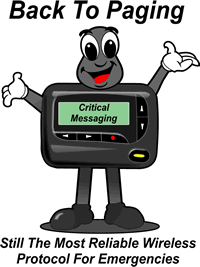

.JPG)




